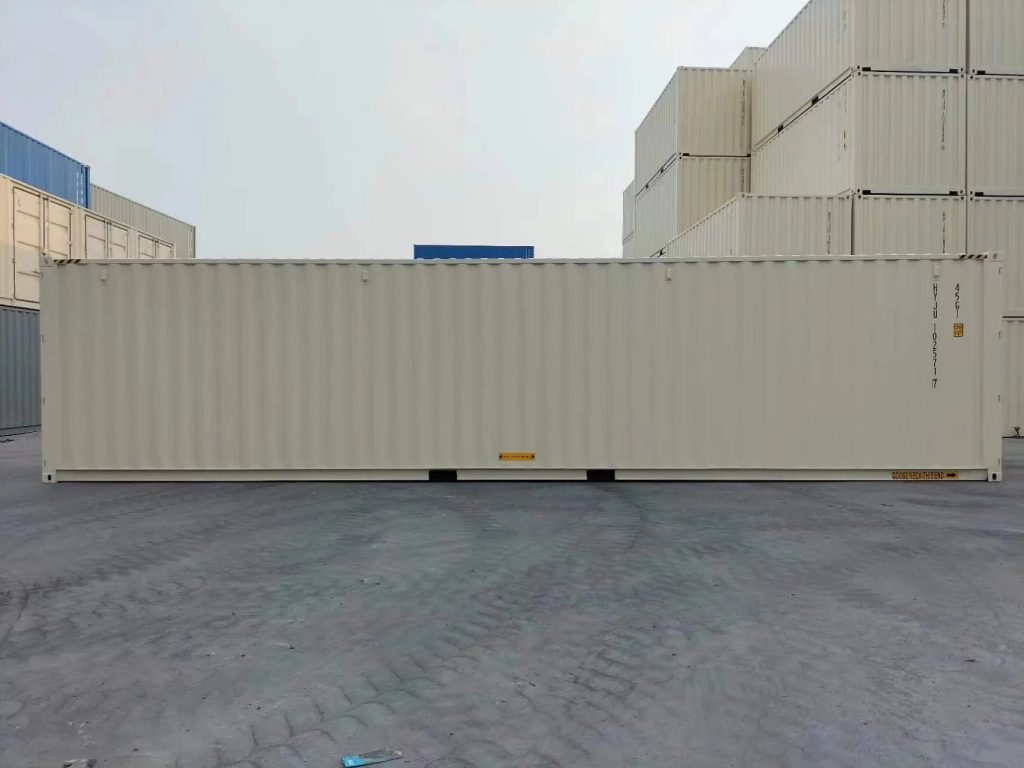Why New Shipping Containers Is A Must At The Very Least Once In Your Lifetime
New Shipping Containers: Revolutionizing the Logistics and Supply Chain Industry
Shipping containers have become the backbone of worldwide trade, allowing the effective transport of items throughout countries and continents. As logistics and supply chain needs progress, so too do shipping containers. This post will explore the significance of new shipping container designs, innovations, and their effect on the industry.
The Evolution of Shipping Containers
Shipping containers have actually come a long method since their beginning in the 1950s. Initially made from steel, the design has expanded to include different products, sizes, and performances to fulfill growing needs for efficiency, security, and sustainability.
Secret Innovations in New Shipping Containers
Development
Description
Benefits
Refrigeration Technology
Advanced insulation and cooling systems.
Ideal for disposable products, extending shelf life.
Smart Containers
Equipped with GPS tracking, temperature level sensing units, and RFID technology.
Real-time monitoring of cargo conditions and location.
Green Containers
Made from sustainable materials and designed for energy efficiency.
Lowered carbon footprint and environmental effects.
Modular Containers
Permits versatile reconfiguration for diverse cargo types and sizes.
Increased adaptability and optimized area usage.
High Cube Containers
Taller than basic containers, supplying more volume within the exact same footprint.
Greater storage capability for oversized cargo.
Kinds Of New Shipping Containers
New shipping containers come in different types, each engineered for specific transport requirements. Here's a list of the most common types:
- Standard Dry Containers: The most common type, used for basic cargo.
- Reefer Containers: Temperature-controlled containers for perishable products.
- Open Top Containers: Designed for large cargo that can not fit through standard doors.
- Flat Rack Containers: Used for heavy loads or devices that must be protected from above.
- Tank Containers: Specialized for carrying liquids, such as chemicals and food items.
- High Cube Containers: Providing additional vertical space for bulkier products.
Advantages of Using New Shipping Containers
Using new shipping containers offers numerous advantages to businesses and the supply chain. Some benefits consist of:
- Enhanced Security: Modern containers are built with innovative locking mechanisms, lowering the threat of theft and damage.
- Increased Efficiency: Smart containers permit real-time tracking, improving logistics management and reducing delays.
- Sustainability: Innovations in products and energy effectiveness assistance minimize the ecological effect of shipping activities.
- Cost-Effectiveness: Reducing waste and optimizing cargo area decreases transport expenses in time.
- Flexibility: Different container types and setups accommodate a vast array of industries and products.
The Impact of New Shipping Containers on Global Trade
The intro of new shipping containers has actually drastically affected global trade practices. According to a report by the Global Maritime Forum, the performance gains from the adoption of new shipping containers have decreased shipping times by approximately 30% in some cases. Moreover, the growth in e-commerce has actually increased the need for numerous shipping container types, leading to innovation and competition among shipping business.
Metric
Pre-New Shipping Containers
Post-New Shipping Containers
Average Shipping Time
4-6 weeks
2-4 weeks
Cargo Damage Rate
10%
2%
Fuel Efficiency
Differs
Approximately 10% cost savings
Cost Per Shipment
₤ 2000
₤ 1500
Carbon Footprint (Estimated)
High
20% lower
Regularly Asked Questions (FAQs)
Q1: What materials are contemporary shipping containers made from? Sea Containers : Modern shipping containers are mainly made from high-strength steel however can also integrate new materials like fibreglass and environment-friendly composites. Q2: How can I track my cargo with a new shipping container?A2: Many new shipping containers come geared up with wise innovation that consists of GPS tracking and RFID. These enable carriers to monitor the area and condition of the cargo in real-time. Q3: What kinds of cargo benefit most from refrigerated containers?A3: Perishable products such as fruits, vegetables, dairy, meat, and pharmaceuticals benefit considerably from refrigerated containers, providing the required temperature level control to keep product integrity. Q4: Are there any environmental guidelines surrounding using shipping containers?A4: Yes, numerous international regulations govern emissions from shipping and the products used in container construction.
The International Maritime Organization(IMO) promotes cleaner shipping by presenting regulations for carbon emissions, motivating using green containers. Q5: Will new shipping container technology lead to greater shipping costs?A5: While preliminary financial investment in new technology may be higher, the performances got from reduced shipping times, lower cargo damage rates, and optimized fuel usage frequently result in
**total cost savings for business over time. The shipping container industry is going through an important improvement, with developments paving the way for a more efficient, safe, and sustainable future. By comprehending the improvements and types of containers available, services can make educated decisions that
enhance their supply chain operations. As the global marketplace continues to grow, so does the requirement for transport solutions that meet contemporary demands. The development of new shipping containers is not simply a trend; it's an essential element of the logistics and supply chain landscape.  **
**